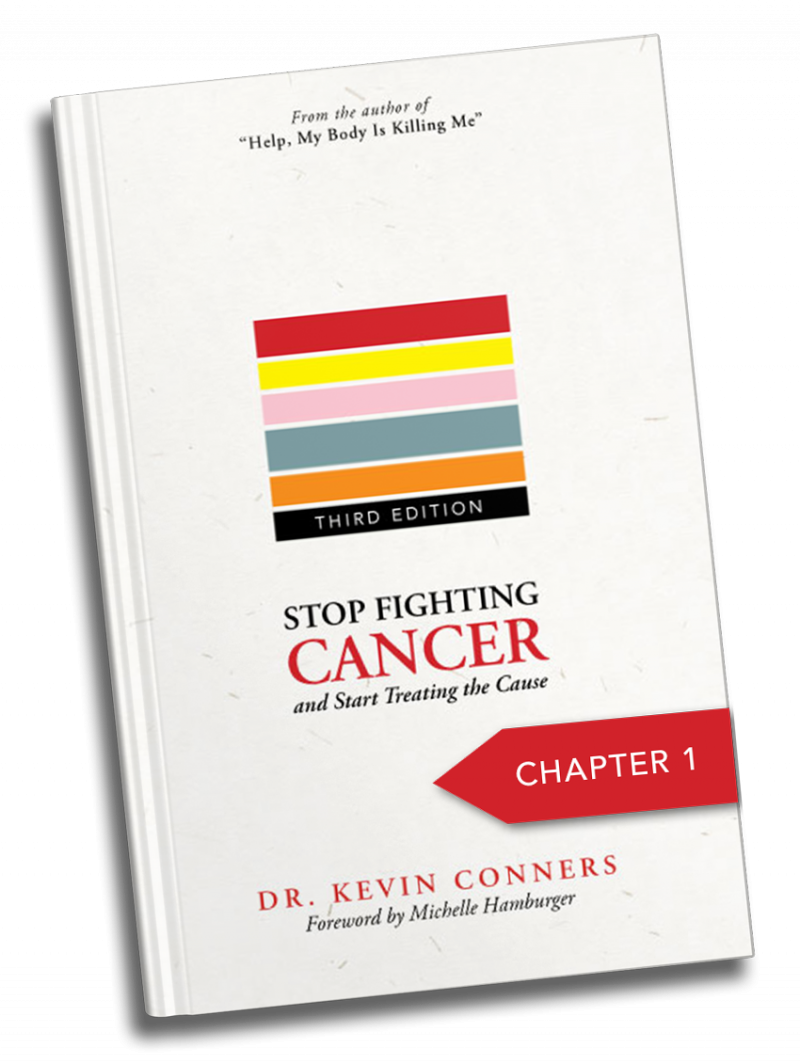Natural Compounds that Slow Glycolysis in Cancers – Part 2
Dr. Kevin Conners
In the 1920’s, Otto Heinrich Warburg described an elevated rate of glycolysis occurring in cancer cells (the Warburg effect) that earned him a Nobel Prize. Glycolysis is the metabolic pathway where cells take glucose to produce energy for cell function and replication.
While the alternative cancer world has long seen this fact as a therapeutic strategy current research is giving us multiple avenues to support cancer patients naturally. In this series of articles, we will explore the latest scientific data that support various natural compounds effect on glycolysis to inhibit the Warburg effect.
Hexokinase (HK) is an enzyme found in all cells that aides the processing of glucose thereby increasing a fuel source for cancer. Ionidamine, a HK inhibitor, has become new drug that interferes with mitochondrial functions, thereby inhibiting cellular oxygen consumption and energy metabolism in both normal and cancerous cells [1]. Some natural compounds have been described as promoting the detachment of HK from mitochondria without any nasty side effects. We’ll discuss these.Prosapogenin A, a saponin from Chinese herb Veratrum nigrum (black false hellebore or Li Lu in Chinese herbalism), could inhibit cell growth and promote cell apoptosis [2]. Methyl jasmonate, a plant stress hormone produced by many plants including rosemary, olive, and ginger, inhibits HK, triggering apoptosis in cancer cells [3].
Another enzyme, pyruvate kinase, is specifically expressed in cancer cells and plays an important role in the metabolism and replication [4]. Oleanolic acid, a triterpene found in numerous herbs (Bearberry, Heather, Reishi, Chinese Elder, Olive Leaf Extract, etc) is an anti-tumor compound that suppresses aerobic glycolysis in cancer cells and targets numerous other pathways that stimulate cell death [5]. SEE our Miracle Mix #2 HERE
Another novel therapeutic target in inhibiting cancer aerobic glycolysis is to slow the function of another enzyme, LDH-A. As an important factor in NAD regeneration, LDH-A was found to be overexpressed in various types of cancer including renal, breast, gastric, and nasopharyngeal cancer [6, 7]. Inhibition of LDH-A might lead to an energy production blockade in cancer cells [8, 9].
EGCg from Green tea extract has been recently shown to have LDH-A inhibiting activity [10]. But other natural compounds, such as furanodiene and maslinic acid (found in curcumin, ginger, and olive oil derivatives) could increase the LDH release in cancer cells by inducing cancer cell injury [11, 12].
It seems that the more one looks, the more one finds natural sources that may help suppress cancer growth. While recent research helps confirm the testimony of ancient authors, little press is given to such studies. I hope to bring more of this to light.
- Pathania, M. Millard, and N. Neamati, “Opportunities in discovery and delivery of anticancer drugs targeting mitochondria and cancer cell metabolism,” Advanced Drug Delivery Reviews, vol. 61, no. 14, pp. 1250–1275, 2009.
- -X. Wang, X.-Y. Shi, Y. Cong, Z.-Q. Zhang, and Y.-H. Liu, “Prosapogenin A inhibits cell growth of MCF7 via downregulating STAT3 and glycometabolism-related gene,” Yao Xue Xue Bao, vol. 48, no. 9, pp. 1510–1514, 2013.
- Cohen and E. Flescher, “Methyl jasmonate: a plant stress hormone as an anti-cancer drug,” Phytochemistry, vol. 70, no. 13-14, pp. 1600–1609, 2009.
- Anastasiou, Y. Yu, W. J. Israelsen et al., “Pyruvate kinase M2 activators promote tetramer formation and suppress tumorigenesis,” Nature Chemical Biology, vol. 8, no. 10, pp. 839–847, 2012.
- Liu, N. Wu, L. Ma et al., “Oleanolic acid suppresses aerobic glycolysis in cancer cells by switching pyruvate kinase type M isoforms,” PLoS ONE, vol. 9, no. 3, Article ID e91606, 2014.
- Kolev, H. Uetake, Y. Takagi, and K. Sugihara, “Lactate dehydrogenase-5 (LDH-5) expression in human gastric cancer: association with hypoxia-inducible factor (HIF-1α) pathway, angiogenic factors production and poor prognosis,”Annals of Surgical Oncology, vol. 15, no. 8, pp. 2336–2344, 2008.
- Xie, V. A. Valera, M. J. Merino et al., “LDH-A inhibition, a therapeutic strategy for treatment of hereditary leiomyomatosis and renal cell cancer,” Molecular Cancer Therapeutics, vol. 8, no. 3, pp. 626–635, 2009.
- -Y. Wang, T. Y. Loo, J.-G. Shen et al., “LDH-A silencing suppresses breast cancer tumorigenicity through induction of oxidative stress mediated mitochondrial pathway apoptosis,” Breast Cancer Research and Treatment, vol. 131, no. 3, pp. 791–800, 2012.
- R. Fantin, J. St-Pierre, and P. Leder, “Attenuation of LDH-A expression uncovers a link between glycolysis, mitochondrial physiology, and tumor maintenance,”Cancer Cell, vol. 9, no. 6, pp. 425–434, 2006.
- Cohen and E. Flescher, “Methyl jasmonate: a plant stress hormone as an anti-cancer drug,” Phytochemistry, vol. 70, no. 13-14, pp. 1600–1609, 2009.
- Zhong, Y. Dang, X. Yuan et al., “Furanodiene, a natural product, inhibits breast cancer growth both in vitro and in vivo,”Cellular Physiology and Biochemistry, vol. 30, no. 3, pp. 778–790, 2012.
- Qian, T. Guan, X. Tang et al., “Maslinic acid, a natural triterpenoid compound from Olea europaea, protects cortical neurons against oxygen-glucose deprivation-induced injury,” European Journal of Pharmacology, vol. 670, no. 1, pp. 148–153, 2011.
NOTE: All of the above statements have not been evaluated by the Food and Drug Administration. This product is not intended to diagnose, treat, cure, or prevent any disease.
Dr. Conners graduated with his doctorate from Northwestern Health Sciences University in 1986. He holds AMA Fellowships in Regenerative & Functional Medicine and Integrative Cancer Therapy.
He is the author of numerous books including, Stop Fighting Cancer and Start Treating the Cause, Cancer Can’t Kill You if You’re Already Dead, Help, My Body is Killing Me, Chronic Lyme, 3 Phases of Lyme, 23 Steps to Freedom, and many more you can download for FREE on our books page.





 In this Brand New 3rd Edition Dr. Kevin Conners adds almost DOUBLE the content with all new insights and practical tips on how to understand your body’s ability to heal and get back to a state of health.
In this Brand New 3rd Edition Dr. Kevin Conners adds almost DOUBLE the content with all new insights and practical tips on how to understand your body’s ability to heal and get back to a state of health.